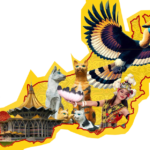Formation of the Malaysian Urological Association
The year 1974 represented a major milestone in the development of Urology in Malaysia. Apart from the opening of the Institute of Urology and Nephrology, it also marked the formation of the Malaysian Urology Association (MUA).
In many ways, the Institute and the MUA have shared a common bond through the years. They are like the two sides of a coin, in that the key players who were instrumental in the formation of the Institute also gave life to the MUA.
The Association was registered on July 23, 1974 with Dr Sreenevasan as the founder President and Dr David Chelvanayagam as its first secretary. In fact, when the MUA was set up, there were only four urologists in the country, the others being Dr Hussein and Dr Proehoeman.
Under the MUA constitution drafted by the four urologists, the aims and objectives of the Association were:
- To advance the art and science of Urology.
- To cultivate and maintain the highest principles of urological practice and ethics.
- To promote and encourage the development and practice of Urology in the country.
- To encourage postgraduate training in Urology at the hospitals and elsewhere and to provide for the holding of classes, lectures and meetings and other means of instructing members and others in the science and art of Urology.
- To promote research in Urology and in any other related branch of science or learning for the purpose of improving the practice of Urology.
- To establish cordial relationships with similar Urological and other bodies in other countries.
At the beginning, the founders of the MUA had relatively modest expectations of this new body. They had initiated it as a journal club. “We used to get a journal each, pick a topic and discuss it, usually on Saturday mornings,” Dr Sreenevasan said. In those early days, the MUA members held their regular discussions either in their own offices at the Ward 4 or in a small lecture room at the dialysis unit. They also invited the hospital’s pathologist and radiologists to take part in these conferences.
Being such a small association had its ups and downs. “One of the problems was finance. But we somehow managed among ourselves to fund whatever was needed,” Dr Sreenevasan added.
The Institute has provided sterling support to the Association over the years including providing a premise for the MUA office and the manpower and equipment to run various activities and programmes. The industry’s and the Ministry of Health’s support for the MUA’s activities, especially its annual scientific conferences, has contributed largely to making the association financially strong.
Currently the MUA has 95 full members. Since its inception, the MUA Presidency has been held by six eminent urologists. Dr Hussein Awang took over from Dr Sreenevasan in 1992 before passing the baton to Dr Khairullah Abdullah in 1994. Dr Clarence Lei became President in 1997 and he served for many years as MUA Exco member starting first as its secretary in 1987. He served more than 10 years at the Institute of Urology and Nephrology and continues to play an important part in MUA affairs especially in the Board of Urology. Dr Loh Chit Sin became president in 1998 and held the post for two years before Dr Sahabudin Raja Mohamed was elected to the post in the year 2000.
Past President Dr Sahabudin has helped push ahead with the growth of the MUA. For the first time, the Association has its own secretariat with one executive secretary. He has also made it a goal for the MUA to acquire its own premises before he leaves office.
This, he envisages, will create an environment where the public can either call in through hotlines or come to the MUA office to get information on urological services, diseases and treatment. “People generally do not know where to go to for such information,” added Dr Sahabudin.
“The MUA will then have a permanent Secretariat and all its activities can be conducted from there. This will serve as the headquarters where business meetings of its officers could be held, and dignitaries and other guests received.”
“In addition, it will provide consolidation and house the other specialist societies. In future, we hope to publish our own journal which will help to provide ongoing updates and practice scientific thought from every corner of Malaysia. This, I hope, will stimulate more activity and support from the members,” said Dr. Sahabudin.
Dr. Sahabudin who was the President from year 2000 – 2004 has organized the 6th Asian Congress of Urology successfully in Kuala Lumpur at the Mandarin Oriental Hotel. Attendance was well received.
Dato’ Dr Rohan Malek who was the President from year 2004 – 2008. Purchase of the office space for MUA was initiated during this period. The MUA office is situated on the second level of the Medical Academies of Malaysia. Renovation was made for one space and rented out the other space. At the moment, it is the centre for MUA meeting and courses.
20th World Video Urology Congress was organized in 2009 by Dato’ Dr Rohan Malek.
Updated by Dr Clarence Lei Chang and Dato’ Dr Rohan Malek – October 2013.


